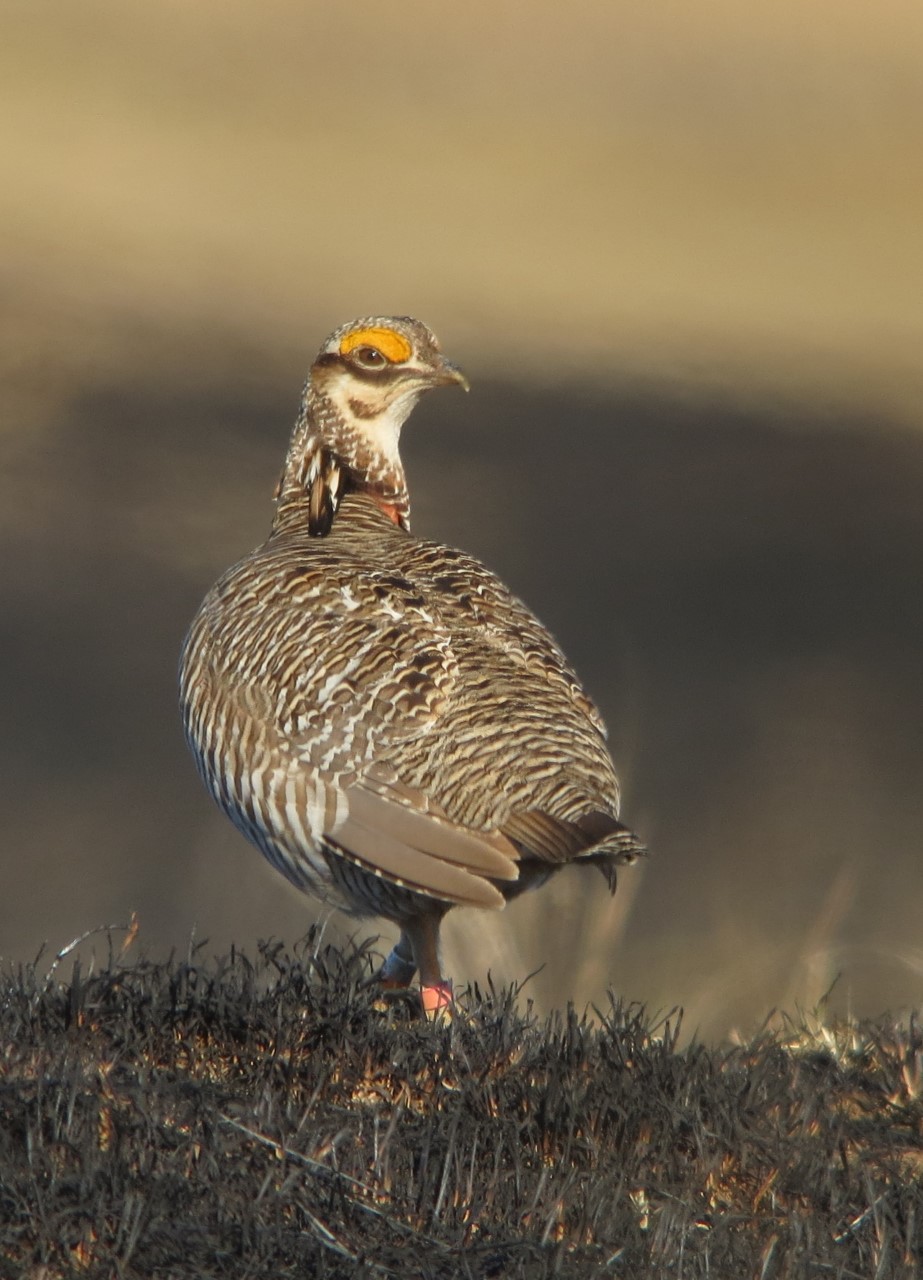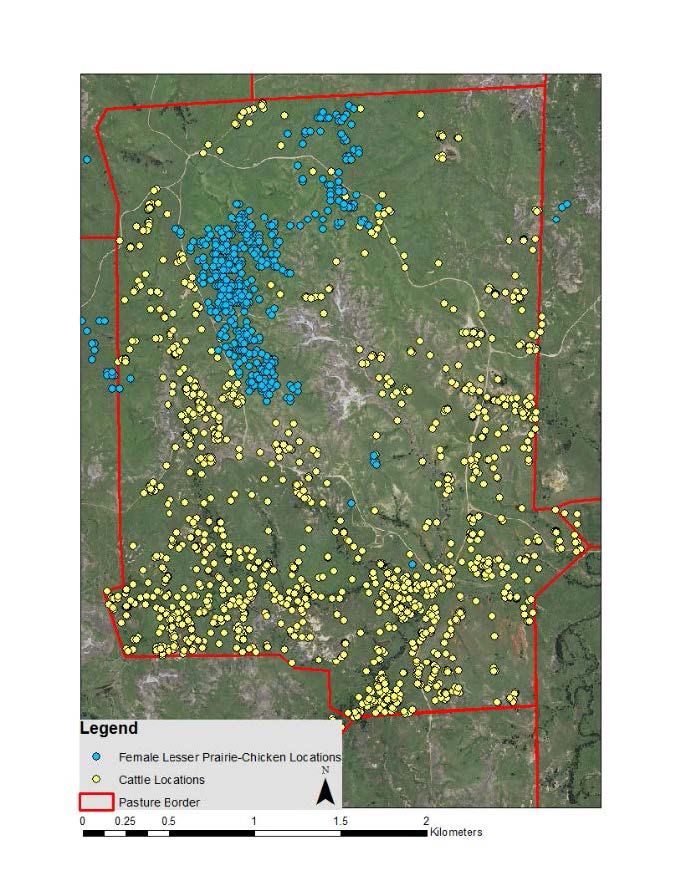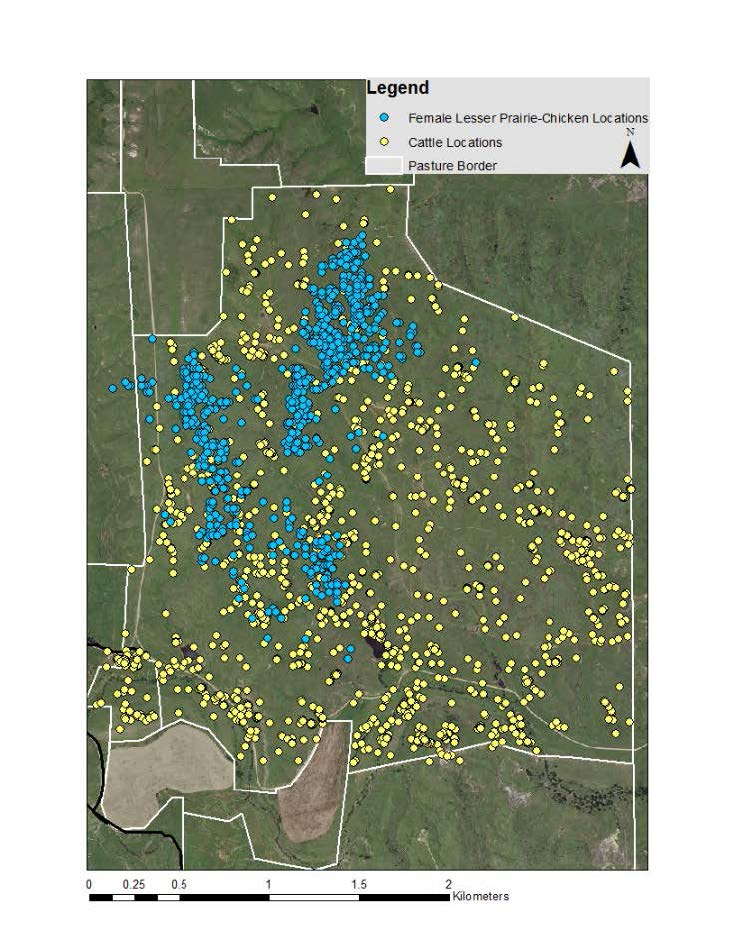Use of Grazing Management and Prescribed Fire for Conservation of Lesser Prairie Chickens
Investigators:
Chris Gulick, M.S. candidate
Project Supervisor:
Dr. David Haukos
Funding:
U.S. Department of Agriculture
(Natural Resources Conservation Service)
WAFWA
LPCI
Cooperators:
Natural Resources Conservation Service
Kansas State University
Location:
Throughout southern, western, and central Kansas
Completion:
May 2019
Status: Completed
Objectives:
Measure effects of cattle space use intensity on vegetative structure and composition within multiple grazing systems
Assess effects of cattle space use and subsequent vegetation response on lesser prairie-chicken space-use and home ranges during key life stages
Investigate characteristics of female lesser prairie-chicken dispersal routes to determine what features affect dispersal at the landscape scale
Progress and Results:
Historically, Great Plains grasslands were shaped by a constant flux of disturbances and stochastic events such as fire, rainfall, and grazing by large herbivores. This natural continuum created a patchwork of habitat types that are used by grassland obligate species of conservation concern, such as the lesser prairie-chicken. European expansion has permanently changed and fragmented these landscapes, but modern land management strategies can mimic historical patterns to conserve habitat for lesser prairie-chickens. This project investigates the influence that landscape management and configuration have on lesser prairie-chicken movement patterns. We will determine how two contemporary management regimes, patch-burn grazing and rotational grazing, influence the spatial arrangement of GPS-collared cattle within pastures. We will then determine how GPS-marked female lesser prairie-chickens use different areas of cattle grazing intensity during different life stages, such as nesting, brooding, and non-breeding. We will also assess female lesser prairie-chicken movement at landscape scales, to determine how landscape configuration and anthropogenic features influence female dispersal. This will inform management aimed at increasing genetic connectivity between lesser prairie-chicken subpopulations.
We found that patch-burn grazed pastures have greater fob and bare ground cover than rotationally grazed pastures. Additionally, patch-burn grazed treatments have greater variation in vegetative structure and composition across gradients of high, moderate, and low cattle grazing intensity within pastures. This increased variation could correspond to a greater variety of habitat types used by lesser prairie-chickens during different seasons.

Figure 1: Cattle and female lesser prairie-chicken locations in a patch-burn grazed pasture.

Figure 2: Cattle and female lesser prairie-chicken locations in a rotationally grazed pasture
Products:
Thesis:
Gulick, Chris (M.S., 2019; advisor Haukos) Effects of working grassland management on lesser prairie-chicken resource selection within home ranges and during dispersal events. Master's Thesis, Division of Biology, Kansas State University.
Professional Presentations:
Gulick, C., and D. Haukos. 2018. Spatial patterns of lesser prairie-chickens in response to different disturbance regimes. International Grouse Symposium, Logan, Utah.
Gulick, C., and D.A. Haukos. 2018. Factors affecting habitat availability for lesser prairie-chickens across different land management regimes. Kansas Natural Resources Conference, Manhattan, Kansas.
Gulick, C., D. Haukos, and J. Lautenbach. 2018. Effect of grazing management systems on space use by cattle and lesser prairie-chickens. Annual Meeting of The Wildlife Society, Cleveland, Ohio.
Gulick, C., J. Lautenbach, and D.A. Haukos. 2017. Space use by cattle, and its cascading effects on lesser prairie-chicken habitat selection. Annual conference of The Wildlife Society, Albuquerque, NM.